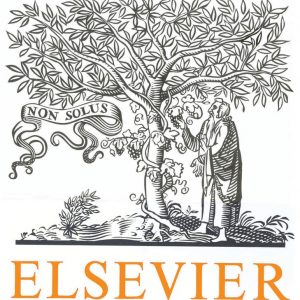دانلود رایگان مقاله لاتین چارچوب هویت چندگانه گروه از سایت الزویر
عنوان فارسی مقاله:
چارچوب هویت چندگانه در گروه
عنوان انگلیسی مقاله:
The Multiple In-group Identity Framework
سال انتشار : 2016

برای دانلود رایگان مقاله چارچوب هویت چندگانه گروه اینجا کلیک نمایید.
بخشی از مقاله انگلیسی:
2. Conceptual background
In this paper, we discuss a range of groups; however, our central topic is group identification and its connotations for sport consumers and organisations. Because of our emphasis on group identification and intergroup processes, we develop the Multiple In-group Identity Framework (MIIF) using social psychological theories of self-representation (Brewer & Gardner, 1996) and social identity (Tajfel & Turner, 1979; Turner, 1985). We use Turner’s (1982, p. 15) definition of a group ‘‘as two or more individuals who share a common social identification of themselves or, which is nearly the same thing, perceive themselves to be members of the same social category.’’ Therefore, the groups we discuss here involve two or more people who cognitively realise their shared membership of a group, which might be a friendship, stadium section (e.g., bleachers), or superordinate entity. Identification, in this sense, does not require approval from other individuals or group members to exist, only recognition in a person’s self-concept (Turner & Reynolds, 2008). Group identification pertains to a sense of oneness between a person and collection of people who share a common characteristic (Ashforth & Mael, 1989). It is this sense of oneness, or shared identity, which leads an individual to describe in-group actions and events using language, such as ‘us’ or ‘we’. The use of associative pronouns illustrates the intertwining of a person’s self-concept with the groups to which he or she belongs (Tajfel & Turner, 1979). The influence of various group memberships, from a social identity perspective, combines with an individual’s unique and idiosyncratic personal identity to comprise his or her self-concept (Turner, 1985). Critiquing this perspective, Brewer and Gardner (1996) and Prentice, Miller, and Lightdale (1994) challenged the personal–social identity dualism, arguing for a more nuanced consideration of the social groups to which a person might belong (Brewer & Gardner, 1996; Prentice et al., 1994). Accordingly, Brewer and Gardner (1996) divided social groups into two types: (1) collective and (2) relational. Collective identification occurs in relation to large, inclusive groups (e.g., national identity, gender or sport team) as the result of an attraction to group totems, symbols, and characteristics (Brewer & Gardner, 1996; Prentice et al., 1994). Although some members of collective groups interact, the primary attraction and attachment stem from positive evaluations of ingroup characteristics. Relational identification, in contrast, emerges due to interpersonal attachments that also contribute to a person’s self-concept (Brewer & Gardner, 1996; Prentice et al., 1994). As Prentice et al. (1994, p. 485) explained: ‘‘in these groups, the strength of group attachment depends critically on the extent to which one knows, likes and feels similar to other members of the group.’’ The collective–relational dualism illustrates that an individual may use different group memberships to satisfy group affiliation or interpersonal objectives. A consumer will typically identify with a constellation of collective and relational groups that relate to various aspects of his or her life (Tajfel & Turner, 1979). Furthermore, these groups provide a sense of coherence and placement in society (Deaux, 1993; Roccas & Brewer, 2002; Tajfel, 1969). The groups to which a person belongs need not interact. For example, an individual might belong to groups of workmates and family friends that exist completely separately. A consumer might also belong to groups that operate in conjunction (e.g., parent and sport fan) or hierarchically (e.g., team and subgroup). In the following section, we outline the three levels of the MIIF at which these collective and relational group dynamics occur in relation to sport teams.
برای دانلود رایگان مقاله چارچوب هویت چندگانه گروه اینجا کلیک نمایید.
کلمات کلیدی:
Minority Languages and Group Identity: Cases and Categories | John ... https://benjamins.com/catalog/impact.27 It then offers a typological framework that draws and expands upon previous ... and while drawing on other related issues (particularly group identity), Edwards ... Conflict and Identity in Romans: The Social Setting of Paul's Letter https://books.google.com/books?isbn=1451416075 Philip Francis Esler - 2003 - Religion In sum, norms maintain and enhance group identity.8 Norms within a social identity framework provide a useful alternative to the (almost universal) use of ... Searches related to group Identity Framework asp.net identity groups asp.net mvc 5 identity implementing group-based permissions management asp net mvc permission based authorization asp.net identity permissions asp net group group based identity definition asp.net identity role claims mvc roles and permissions
